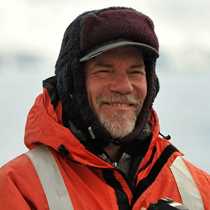St Kilda
The rugged islands, stacks and skerries of the St Kilda group rise from the Atlantic like fantastic monuments to an ancient and titanic struggle. Thrust up in the shapes of broken spears and shields, they are a fitting memorial to the ages old battle between sea and stone, a struggle in which the waves will always be slowly inevitably victorious.
Sixty million years ago, as North America began to shear away from Europe and the northernmost Atlantic first opened, a huge volcano stood here. As the ocean widened, its waves tore at the new shores until all but the roots of the great mountain had been worn away. It is these deep igneous rocks, gabbros, granites and granophyres, that make up the dramatic cliffs and spires of the St Kilda group today.
But, although the sea is winning the long war and slowly tearing the islands down, it is not entirely a destructive process. Below the waves, where the sea has won, the island is not gone but transformed. The great craggy bluffs drop continuously into the depths, the same buttresses, towers and vertical cliffs plunging down and down into the darkness. Though the topography remains similar, the flora and fauna could hardly be more different. As though through the twisted reflection of a playing card, the green world of sheep and seabirds is utterly changed into an alien community of weird animals living where the light of the sun can never reach.
Using our ROV to explore this hidden mirror of St Kilda, we found beautiful feather stars, bright sponges in whimsical shapes and strange skeleton shrimp perched on delicate hydroids, snatching their planktonic meals from the passing current.
Any visit to St Kilda is a great pleasure and a revelation. The islands’ history scenery and wildlife are a rich reward for the trials of the journey. And, with a little exploration, the hidden worlds beneath the sea add another facet to this north Atlantic gem.




